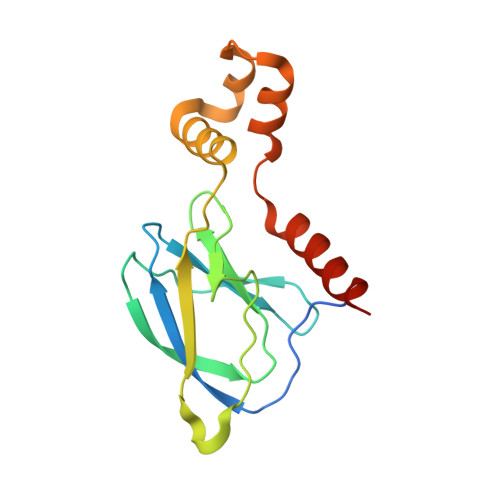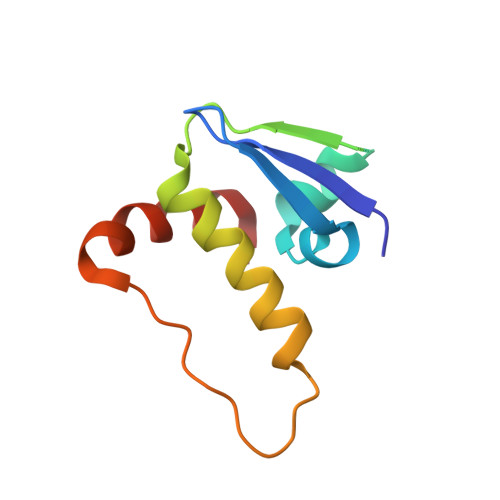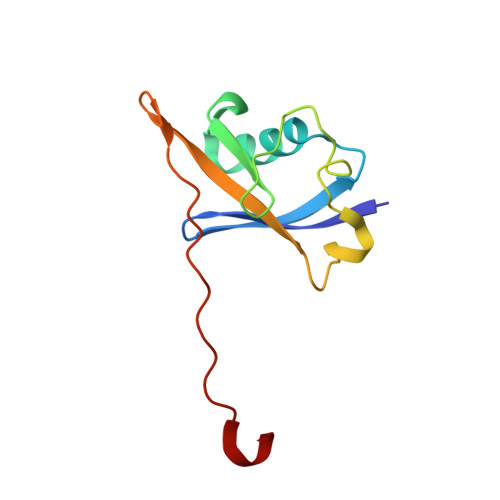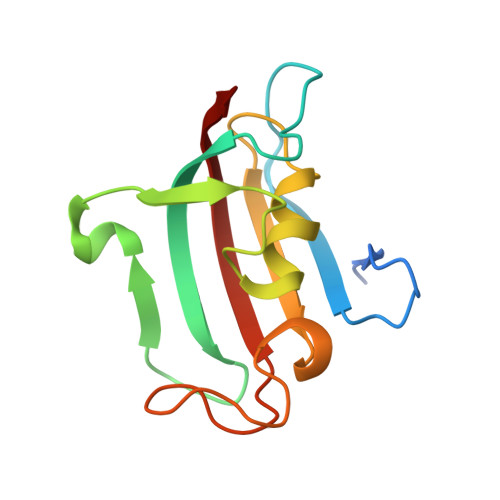Discovery of a Potent Proteolysis Targeting Chimera Enables Targeting the Scaffolding Functions of FK506-Binding Protein 51 (FKBP51).
Geiger, T.M., Walz, M., Meyners, C., Kuehn, A., Dreizler, J.K., Sugiarto, W.O., Maciel, E.V.S., Zheng, M., Lermyte, F., Hausch, F.(2024) Angew Chem Int Ed Engl 63: e202309706-e202309706
- PubMed: 37942685
- DOI: https://doi.org/10.1002/anie.202309706
- Primary Citation of Related Structures:
8PC2, 8PDF - PubMed Abstract:
The FK506-binding protein 51 (FKBP51) is a promising target in a variety of disorders including depression, chronic pain, and obesity. Previous FKBP51-targeting strategies were restricted to occupation of the FK506-binding site, which does not affect core functions of FKBP51. Here, we report the discovery of the first FKBP51 proteolysis targeting chimera (PROTAC) that enables degradation of FKBP51 abolishing its scaffolding function. Initial synthesis of 220 FKBP-focused PROTACs yielded a plethora of active PROTACs for FKBP12, six for FKBP51, and none for FKBP52. Structural analysis of a binary FKBP12:PROTAC complex revealed the molecular basis for negative cooperativity. Linker-based optimization of first generation FKBP51 PROTACs led to the PROTAC SelDeg51 with improved cellular activity, selectivity, and high cooperativity. The structure of the ternary FKBP51:SelDeg51:VCB complex revealed how SelDeg51 establishes cooperativity by dimerizing FKBP51 and the von Hippel-Lindau protein (VHL) in a glue-like fashion. SelDeg51 efficiently depletes FKBP51 and reactivates glucocorticoid receptor (GR)-signalling, highlighting the enhanced efficacy of full protein degradation compared to classical FKBP51 binding.
- Department of Chemistry and Biochemistry Clemens-Schöpf-Institute, Technical University Darmstadt, Peter-Grünberg-Straße 4, 64287, Darmstadt, Germany.
Organizational Affiliation:




















